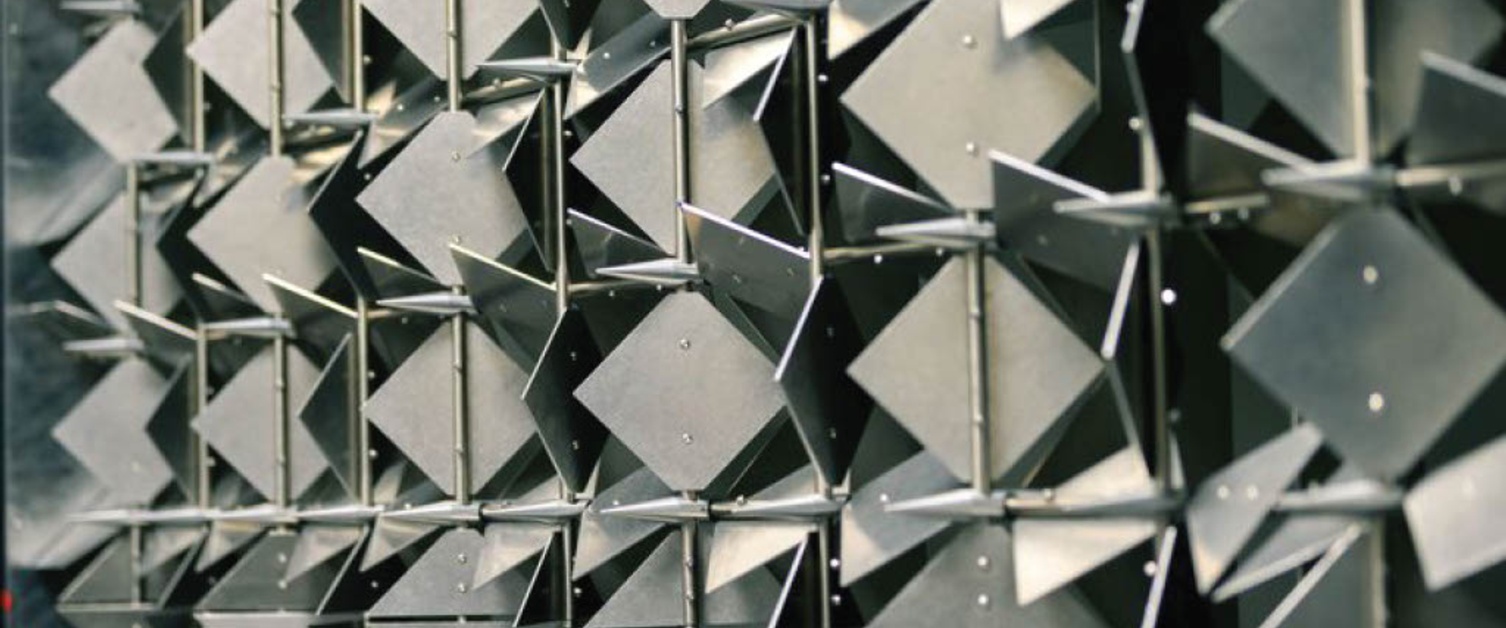A Totally Turbul-ar Tunnel
- By AMS Staff
- Jul 14, 2022
A Parcel from the Bulletin of the American Meteorological Society
50 kilometers per hour (93 miles per hour)— Wind speeds achieved in a recently-developed wind tunnel that generates unprecedented turbulent conditions. Located at ForWind, the joint Center for Wind Energy Research of the Universities of Oldenburg, Hannover, and Bremen, the tunnel creates turbulent air flow with the use of an active grid—a wall-like structure with about 1,000 small, diamond-shaped aluminum “wings” located at the beginning of the tunnel that can be rotated in two directions. This allows for small portions of the tunnel’s nozzle to be blocked and reopened for short amounts of time, which creates swirling air. “With the active grid—the largest of its kind in the world—we can generate many different turbulent wind fields in the wind tunnel,” says Lars Neuhaus of the University of Oldenburg. The tunnel can produce winds that are equivalent to a category 1 hurricane.
Wind gusts—also known as local turbulence—can cause storms to leave random patterns of destruction, but predicting this turbulence in detail is difficult. The turbulence results from large- and small-scale atmospheric flows that mix, and the primary parameter characterizing the turbulence of flow is the Reynolds number—the ratio of kinetic energy to frictional forces in a medium; a larger Reynolds number indicates a more turbulent flow. The new wind tunnel allowed the researchers to increase the Reynolds number a hundred times greater than previously achieved and replicate storm conditions. They adjusted both the power of the tunnel’s fans and the movement of its grids to simulate the conditions of turbulent air flow and generated larger turbulence (about 10–100 meters) in the longitudinal direction of the tunnel as well as small-scale turbulence with dimensions of just a few meters. “Our main finding is that the wind tunnel flow combines these two components into perfect, realistic storm turbulence,” says Hölling. Their research will make it possible to scale down atmospheric turbulence relevant to wind turbines, aircraft, and houses to the size of one meter in the wind tunnel, allowing scientists to conduct realistic experiments with miniature models. An article on the tunnel was published in Physical Review Letters. [SOURCE: University of Oldenburg]
PHOTO CAPTION: Almost a thousand diamond-shaped aluminum plates can be turned in two directions by 80 drive shafts, generating multiple scales of turbulence from the flow of four giant fans. [Photo credit: University of Oldenburg/Mohssen Assanimoghaddam]
